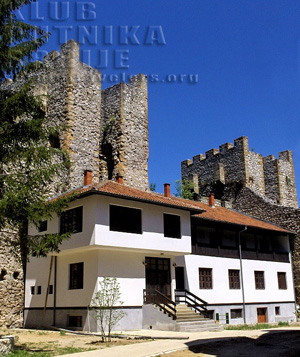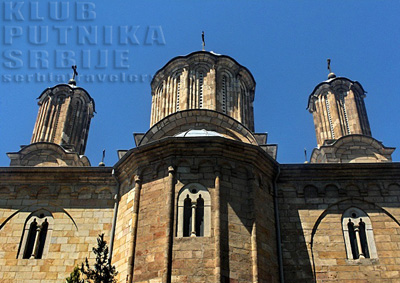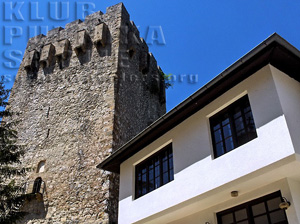 Manasija Monastery
Manasija Monastery
Manasija Monastery, surrounded by beautiful nature, is perched upon a hill next to the Resava River, not far away from the town of Despotovac. Monastery was built in the 15th century by Despot Stefan Lazarevic. The church is placed within the fortress consisting of eleven completely preserved defence towers connected by thick stone walls. Beside the church, the dormitory and the dining room are also within the walls, as well as ruins of other buildings from ancient times.
The frescoes, such as Portrait of Despot Stefan, The Holy Warriors of Manasija and The Souls of the Righteous in Divine Hand (with souls presented in form of little babies dressed in blue and pink) are only some of the numerous amazing details that can be seen inside the church.
{tab=history}
History of Manasija Monastery
Manasija Monastery was built by Despot Stefan Lazarevic, between 1406 and 1418.In the Battle of Kosovo, in 1389, Serbian king Lazar was killed, leaving his underaged son Stefan to rule the state. After this, Serbia became Ottoman vassal, and Stefan occasionaly helped the Ottoman Empire with his army. He was later promoted into a "despot", which is a royal title, by the Byzantine Emperor.
 During his rule, he tried to balance between Hungarian and Ottoman empires, saving the independence of already weakened Serbian state as he best could.
During his rule, he tried to balance between Hungarian and Ottoman empires, saving the independence of already weakened Serbian state as he best could.Stefan Lazarevic has been remembered as a noble and brave leader, as well as an excellent artist (his famous poem Word of Love is considered to be the beginning of Serbian love poetry). Manasija Monastery is his most important foundation. He was supposed to be buried there, but due to sudden death in 1427, he was eventually buried in Koporin Monastery, also one of his foundations.
A couple of years after Manasija Monastery was built, a manuscript copying workshop, known as Resava School, was opened within the premises, putting the monastery on the map of Medieval Serbia as an important cultural and educational center.
{tab=getting there}
Getting to Manasija Monastery
Manasija Monastery, also known as Resava, is located about 3 km North-West from the town of Despotovac, on a hill upon the Resava River.You can reach Despotovac by bus from Belgrade (two daily buses). From Despotovac to Manasija you can easily walk or hitchhike - allow yourself about 45 minutes for reaching the monastery on foot.
{tab=things to see}
What to see in Manasija?
Built in tumultuous times, the monastery is fortified by strong ramparts and towers. Huge fortress that surrounds the monastery has an irregular polygonal basis. There are 11 towers, the most beautiful one being Despot's Tower, on the north side. Inside the fortress, apart from the main church, there is also the dormitory building as well as the monastery dining room. The church in devoted to Holy Trinity.
Inside the fortress, apart from the main church, there is also the dormitory building as well as the monastery dining room. The church in devoted to Holy Trinity.
Despite of the fortification, the Turks managed to conquer the monastery in 1439 and burn it to the ground. It was subsequently restored and burned down several times. The church itself represents the most important but also atypical monument of Morava architectural style. In contrast to other churches of this school, the façade of Manasija is made exclusively of monumental cut stones, not brick, following the tradition of older Rascian monasteries.
In the parvis there are remains of two older buildings from the original monastery complex. South of the church can see the ruins of a big dining room, which had an extra floor that served as a stable and manuscript workshop.
The frescoes have been only partially preserved, but what can be seen today is considered to be among the best works of Serbian medieval art. One of the most famous frescoes is the portrait of Despot Stefan Lazarevic. Inside the front door arch is a fresco representing The Souls of the Righteous in Divine Hand.
Fresco Holy Wariors is considered to be one of the most beautiful frescoes in all Serbian churches, especially valuable for the fact that it shows typical clothing and weapons from the 15th century Serbia.
{/tabs}

